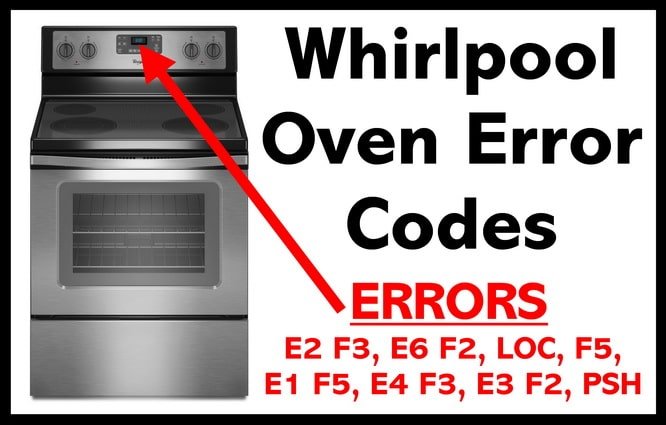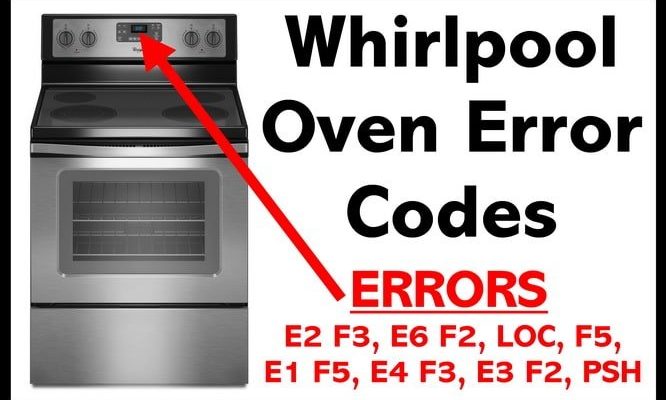
In simple terms, an “E2” error code on your Whirlpool oven or range isn’t something you want to ignore. It’s like a warning light in your car that something might be amiss under the hood. This code usually indicates an issue with the oven temperature sensor or the control board. While it may not seem like a big deal at first glance, ignoring it could lead to inconsistent cooking results or even an unsafe situation. So, let’s dive deeper into what this error means and what you can do about it.
Understanding the E2 Error Code
The “E2” error code is a bit like your oven’s way of saying, “Hey, there’s a problem!” But what exactly does E2 mean? Generally, this code signifies a problem with the oven temperature sensor. The temperature sensor is a critical component—it’s like the thermometer in your oven. It tells the control board the current temperature inside, ensuring your food cooks evenly and accurately.
Now, if this sensor isn’t working correctly, your oven might think it’s hotter or cooler than it actually is. It’s a bit like having a broken thermostat in your house—you’re never quite sure if it’s really warm or just pretending to be. This discrepancy can lead to undercooked meals or overcooked disasters, neither of which are ideal.
You might be wondering, “Can I just ignore it and keep baking?” Well, technically, you could, but it’s not recommended. Ignoring the E2 error could lead to more significant problems down the line, much like ignoring a small leak that eventually floods your basement. Besides, it’s always better to address these issues sooner rather than later, for both safety and culinary success.
Common Causes of the E2 Error Code
So, what triggers the E2 error code? Typically, several factors could be at play. First, let’s consider the temperature sensor itself. Over time, wear and tear or an electrical fault might cause it to malfunction. It’s like an old pair of shoes eventually wearing out—they just don’t perform like they used to.
Another potential cause could be the oven’s control board. This board is essentially the brain of your oven, processing all the data from various components. If there’s a glitch or fault here, it can send mixed signals, leading to the E2 error code. Think of it like a computer’s motherboard getting confused—nothing works right until it’s fixed.
Additionally, electrical issues such as loose connections or damaged wiring could also be culprits. Just like a loose plug might cause your lamp to flicker, your oven’s components need solid connections to function properly. If there’s an intermittent connection, it can disrupt the communication between the sensor and the control board, triggering an error.
Before you panic, here’s what you can do: visual inspection might reveal obvious issues like disconnected wires or visible damage. However, for a comprehensive diagnosis, it’s usually best to consult a professional appliance technician.
Steps to Address the E2 Error
Okay, so you’ve got this E2 error staring you in the face. What’s the next step? Don’t worry—fixing this isn’t as daunting as it seems. Let’s walk through some steps you can take to resolve this issue safely and effectively.
First, the simplest step you can take is to reset your oven. Like rebooting your computer, resetting can sometimes clear temporary glitches. To do this, turn off the oven and unplug it from the power source for a minute or two. Then, plug it back in and see if the error disappears. If it does, you might be in the clear for now. If not, we have a bit more work to do.
If the error persists, check the temperature sensor. You can do this by opening the oven door and locating the sensor inside (usually at the back). Make sure it’s securely connected and free from visible damage. If it seems loose, gently secure it back in place. However, if you’re uncomfortable doing this—or the sensor seems damaged—it’s best to call in a professional.
Finally, if these steps don’t solve the problem, it could be an issue with the control board or wiring. In this case, hiring a qualified technician is crucial. They have the skills and tools needed to handle electrical diagnoses and repairs safely.
Preventative Measures to Avoid Future Errors
After tackling the E2 code, you’re probably asking, “How can I prevent this from happening again?” Great question! A bit of regular maintenance can go a long way in keeping your oven in top-notch condition.
Start by cleaning your oven regularly. A build-up of grime or food particles can sometimes interfere with the sensors. It’s akin to keeping your glasses clean for a clearer view—your oven’s components work better when they’re not obstructed by debris.
Also, make it a habit to periodically inspect the oven’s wiring and connections. As mentioned earlier, loose wires can lead to errors. So, it’s worth taking a peek every few months to ensure everything’s snug and secure.
Lastly, consider having a professional check-up for your oven every year or so. Think of this like taking your car in for a tune-up. A technician can spot and fix potential issues before they become significant problems, saving you time, money, and hassle in the long run.
In conclusion, while the E2 error code might be a bit annoying, it doesn’t spell disaster. With a bit of troubleshooting and preventative care, you can keep your Whirlpool oven running smoothly and safely for years to come. If in doubt, calling a professional is always a smart move to get expert advice and ensure everything’s working just right.
